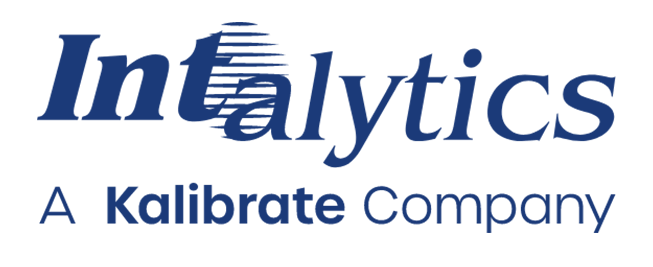Site Selection Best Practices Q&A: Beyond the Basics – Accounting for Challenging Performance Drivers in Predictive Modeling

Over the last several weeks, Intalytics has published a series of articles concerning site selection best practices – from accurately defining trade areas and quantifying competitive impacts to accounting for site and situational characteristics. However, in keeping with Intalytics’ philosophy of full transparency, we also wanted to shed light on some of the factors that clearly influence location performance but are often overlooked and can be difficult to quantify and incorporate into forecasting models. Our perspective is that our clients are best served when they understand not only the strengths of forecasting models, but also some of the more nuanced and difficult to quantify factors that can impact the performance of a future location.
In this most recent Q&A, we sat down with Intalytics founder Bob Buckner and modeling team leader Suzanne Beltran to identify these often overlooked, difficult to quantify factors and what can be done to account for them when building forecasting models.
Most real estate executives likely understand how locating future sites in demographically strong trade areas, in favorable competitive environments, etc. is critical to ensuring future success. Are there any factors that influence performance that are less intuitive and more difficult to account for using sales forecasting models?
Bob Buckner: Several immediately come to mind for me. Anyone who has ever managed a business enterprise recognizes how influential manager strength can be in impacting unit performance. History has shown that replacing a poor manager with a strong manager can influence performance by 30% or more. Similarly, an operator’s investment in local store marketing (or lack thereof) can significantly impact performance. The challenge for real estate teams is that when a commitment is made to opening a new location, it is done without the benefit of knowing what the strength/weakness of the manager will be or how strongly the location will be supported with advertising dollars. As a result, these factors are often not accounted for in a proposed location’s pro forma analysis.
Suzanne Beltran: I would also add that significant fundamental changes to a concept such as the addition or deletion of key merchandise categories and/or services provided, the development of new prototypes, changes in building size, operating hours, etc. are also factors that can significantly influence the performance of future locations. As an example, if I build a model for a quick service restaurant (QSR) chain based exclusively on units that have a single drive-thru, have seating for only 20 guests, and do not offer breakfast items, it should not be surprising that those are the characteristics implicit in forecasts for future units. If the QSR elects to add a second drive-thru lane, expand the menu, and/or add additional seating, future forecasts using this model are likely to be conservative.
Does that mean that forecasting models are inappropriate when such conceptual changes are anticipated?
SB: Absolutely not. Evolutionary change is a fact of life for multi-unit operators across industry, and we have worked hard to evolve alongside our clients and develop some creative ways to address such changes. For example, a retailer or restaurant typically does not roll out changes to their building’s physical plant or offerings without first testing the merits of such changes in a small subset of locations. While 20 locations constitute a small database for a 1,000-unit operator, there is a lot we can learn from conducting a deep analysis of these locations and comparing our findings with the performance we would typically anticipate by using the forecasting model for the original prototype.
Again, leveraging the QSR example, we can determine if adding breakfast items changes the customer profile of the concept, whether new competitors are being introduced, and ultimately quantify the impact that adding these items has on performance. The same is true for adding seating and/or drive-thru lanes. In quantifying these differences relative to the original concept, we are then able to adjust the original model to reflect such changes. As a result, forecasts for future locations will reflect the changes implicit in the new concept. One caveat – an operator will always reach a point of diminishing returns when adding seating capacity, checkout lanes, exam rooms, square footage, etc. From a modeling standpoint, we work hard to quantify the effective leveling off point so as to avoid over-forecasting for future locations purely on the basis of how much “larger” they are.
You’ve both referenced store management and marketing spend as drivers of performance. How do your forecasting models account for these variables?
BB: We are able to incorporate factors such as management quality/tenure and marketing spend into our forecasting models if our client utilizes a means of quantifying such factors for existing units. Going back to Suzanne’s QSR example – if they capture net promoter scores (NPS) for each existing unit and/or have a bonus system that rewards managers according to their strength, we can quantify the importance of strength of management on performance. This process begins by leveraging our model for the original concept to generate a forecast for each existing unit (forecasts that do not account for the strength of individual unit management). We then compare these projections against each unit’s actual performance. Invariably, we find that the units whose actual performance exceeds model projections have the strongest managers and vice versa. The result is a quantification of the impact that a strong, average, or weak manager has on performance, all other factors being equal. Exactly the same approach can be used to measure the impact of marketing spend. These adjustments are incorporated into our models so that as soon as the QSR decides specifically who will manage a new unit and how strongly it will be supported with respect to local store marketing and creating brand awareness, the forecasts can be adjusted to reflect these specifics.
SB: We do have to be mindful with respect to how we incorporate marketing spend into a model. I’ve seen numerous instances where clients over-invest in markets or trade areas where they already overperform – this can introduce bias into the data, and is further evidence for why quantifying your value gap is so important when determining which trade areas are worthy of incremental investment in marketing and advertising budget.
Intalytics routinely helps its clients better understand and quantify the consequences of concept evolution as it relates to their future deployment strategies. If you face similar challenges and would like to speak with an Intalytics professional about how we could help, please feel free to contact us to start a discussion.
Related News
Carousel items












